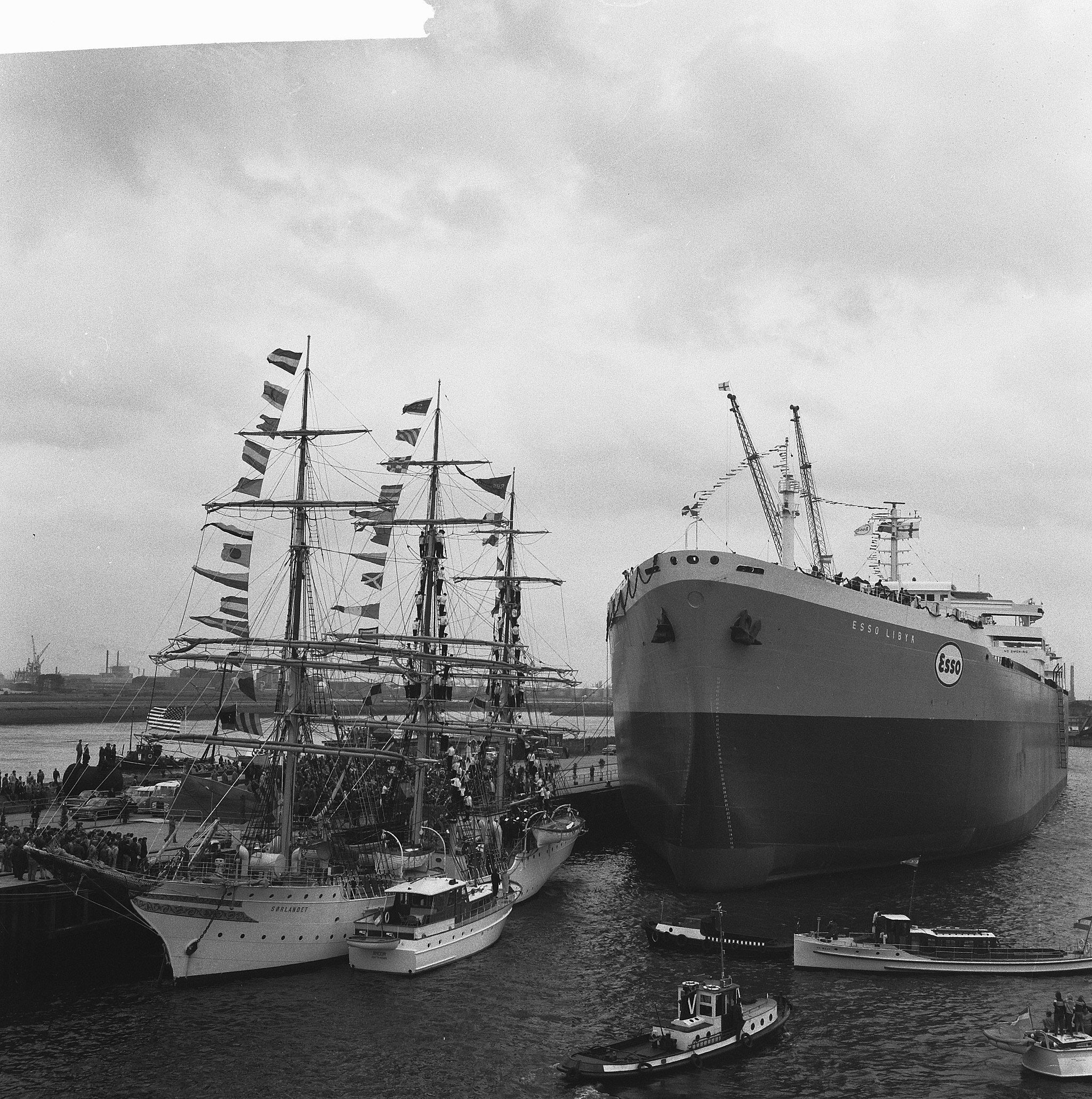INDEPENDENCE.
Independence
The defeat of Italy and its allies during the battle of El Alamein in 1942, led to the occupation of Libya by British allied forces1. The defeat at the hands of the British brought disastrous consequences upon Italy, which up until that point controlled regions in North Africa including Libya. The relinquishing of all claims to Libya by the Italians was formalised in the signing of the 1947 Peace Treaty2.
Before the start of WW2, there were many discussions amongst the tribal leaders as to who Libya should side with in the event of a war. The Libyan people including King Idris and other representatives in exile decided to support Britain and its allies, who together promised Libya independence. Tripolitania and Cyrenaica supported Britain and its allies by forming the Libyan Arab Forces, which fought on the ground along with Britain3.
Allied Administration of Libya - British tanks and crews line up on Tripoli's waterfront after capturing the city during World War II - December 1942.
After the end of WW2, Britain and France both declared vested interests in controlling regions of Libya. Initially, the British proposed a plan, the Bevin-Sforza Plan, according to which Cyrenaica would remain under Britain's influence and Tripoli under Italy’s trusteeship and Fezzan under French4. This proposal was not acceptable to the Arab nationalists who wanted independence for Libya. Owing to the Arab nationalist’s objections, the United Nations eventually voted in favour of Libya becoming a united and independent kingdom. National assembly devised a constitution which recognized Libya as a federal state with separate parliaments for the provinces5.
On the 24th December 1951, Libya declared independence from Britain and France, thus becoming the United Kingdom of Libya and the head of the Senussi Muslim Order, Sīdī Muḥammad Idrīs al-Mahdī al-Sanūsī became its first king6.
The flag of Libya was originally introduced in 1951, following the creation of the Kingdom of Libya. The flag, consisting of black, red and green, was designed by Omar Faiek Shennib and approved by King Idris Al Senussi who participated in the UN delegation representing the three regions of Cyrenaica, Fezzan, and Tripolitania at UN unification discussions.
Libyan Flag of Independence
During 1954, Libya in desperate need of financial aid, signed an agreement with the USA, granting them a number of airbase rights, amongst these bases was Wheelus, which was situated close to Tripoli and considered to be an important installation7.
In 1956, in a bid to gain necessary revenues, Idris granted oil exploration concessions to major foreign oil companies, including Esso, Mobil, and Texas Gulf, leading to the 1959 discovery of oil in the provinces of Tripolitania and Cyrenaica8. The following years were spent in the building of a 167km pipeline, linking the oil fields to the Mediterranean Sea, thus aiding the export of Libyan oil. The pipeline was opened in 1961 by King Idris, and heralded the start of Libya as an international oil producer.
Wheelus Air Base, Libya
United States Air Force PhotoPublic domain, via Wikimedia Commons
From an impoverished country, Libya quickly became a wealthy nation, no longer in need of economic aid, this was achieved through the 50% taxation on all oil exports, which was applied to the major foreign concession holders.
Esso Tanker, Libyan Harbour, 1960s
During his reign, King Idris exercised his power in the banning of all political parties, leading to the abolishment in 1963 of Libya’s federal government9. Idris replaced this with a unitary state, with himself as monarch and its succession going to his heir apparent. 1964, saw the government bowing to the growing anti-Western agitation in the Arab world and ordering the evacuation of American and British air bases, including Wheelus Air Base, which did not actually close until the spring of 197010.
In 1967 King Idris drew criticism from certain factions within Libya, due to close ties with the West and his support of Israel during the Six Day War. The reign of King Idris came to an end on the 1st September 1969, when 27 year old Muammar Gaddafi and fellow army officers staged a coup d’etat, deposing Idris and naming Gaddafi chairman of the Revolutionary Command Council, which was to become the governing body of Libya11.
King Idris Senussi
FOOTNOTES.
Oyeniyi, Bukola Adeyemi. The History of Libya. Santa Barbara, CA: Greenwood, an imprint of ABC-CLIO, LLC, 2019.
Tecola W. Hagos (20 November 2004). "Treaty Of Peace With Italy (1947), Evaluation And Conclusion"
Oyeniyi, Bukola Adeyemi. The History of Libya. Santa Barbara, CA: Greenwood, an imprint of ABC-CLIO, LLC, 2019.
ibid.
ibid.
“History.” Encyclopædia Britannica. Encyclopædia Britannica, inc. Accessed January 12, 2021. https://www.britannica.com/place/Libya/History.
Oyeniyi, Bukola Adeyemi. The History of Libya. Santa Barbara, CA: Greenwood, an imprint of ABC-CLIO, LLC, 2019.
ibid.
Vandewalle, Dirk (2006). A History of Modern Libya. Cambridge: Cambridge University Press.
ibid.
Oyeniyi, Bukola Adeyemi. The History of Libya. Santa Barbara, CA: Greenwood, an imprint of ABC-CLIO, LLC, 2019.





